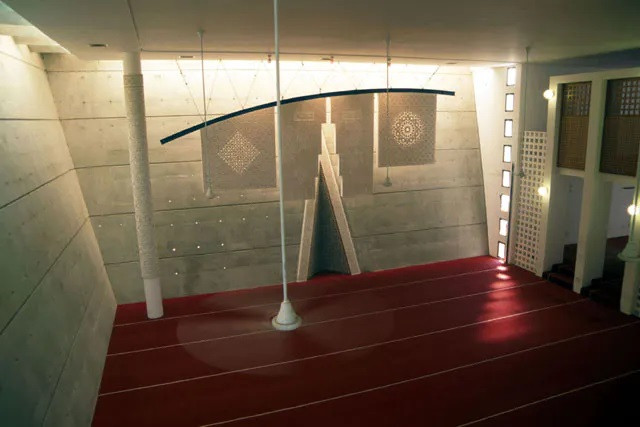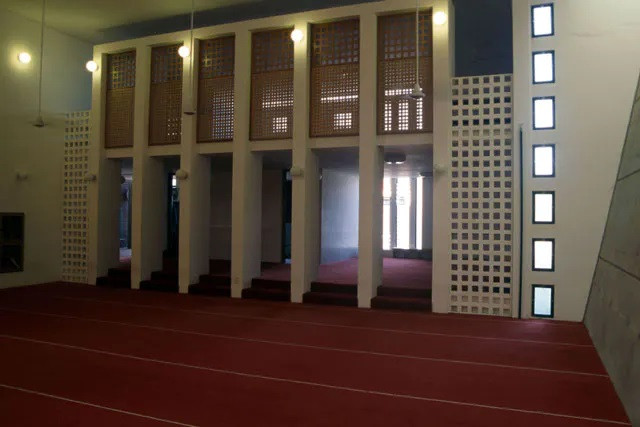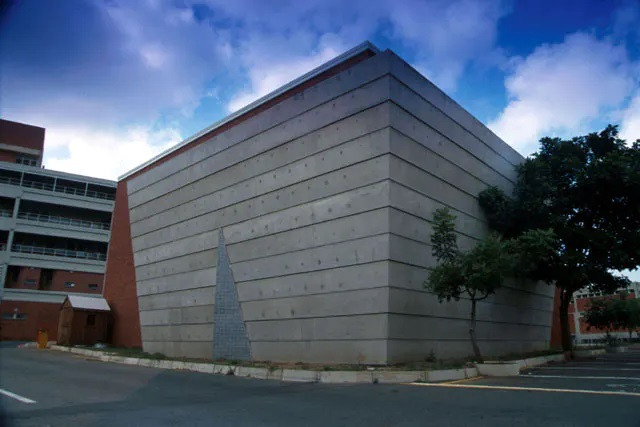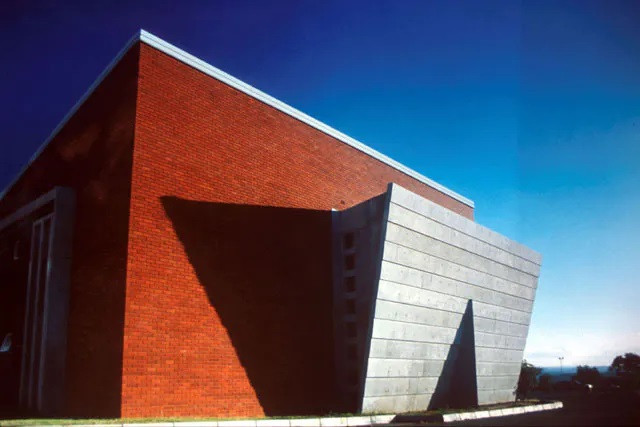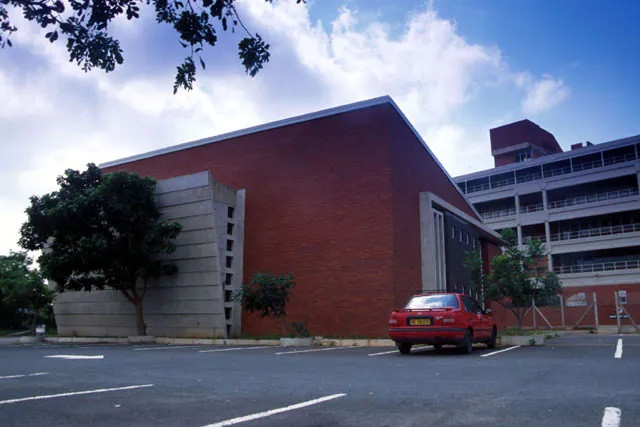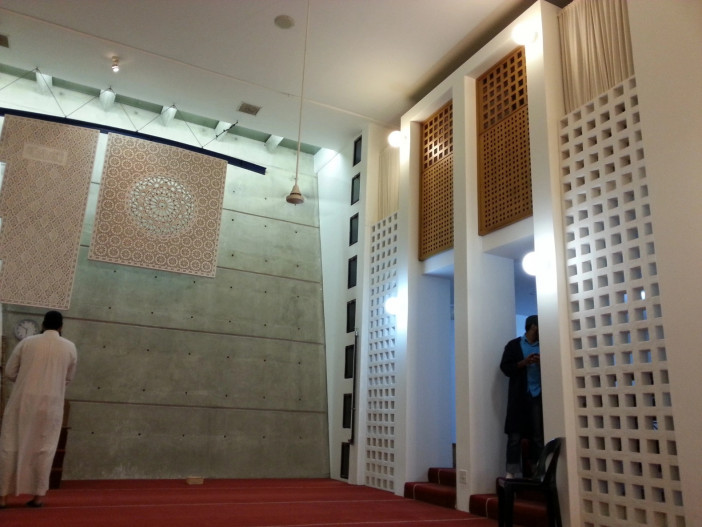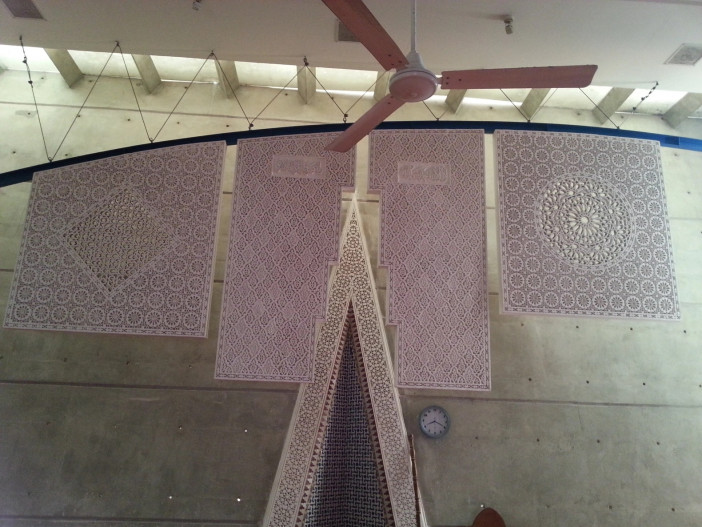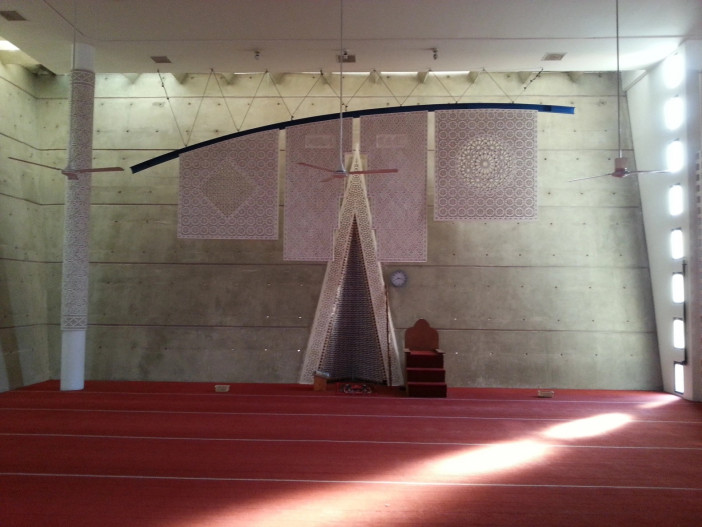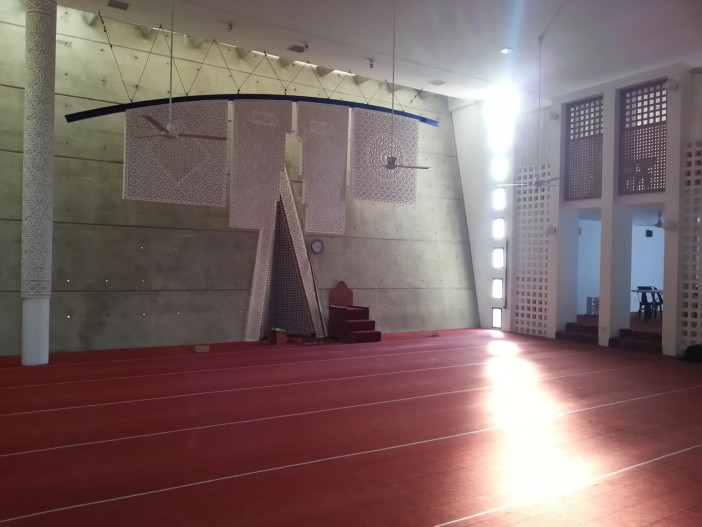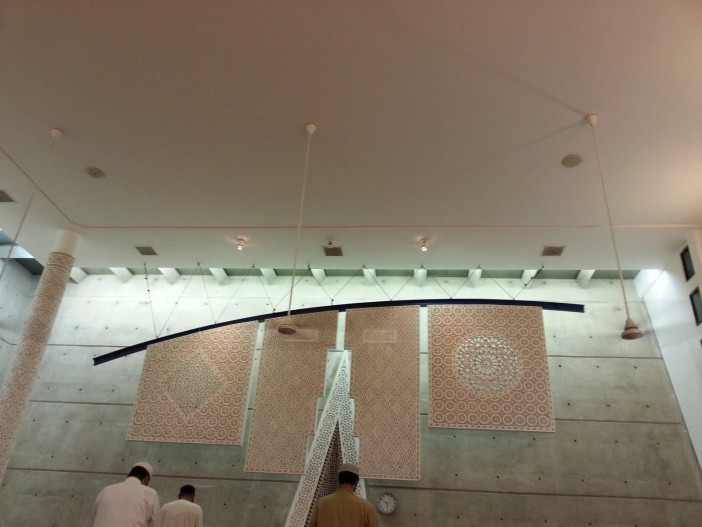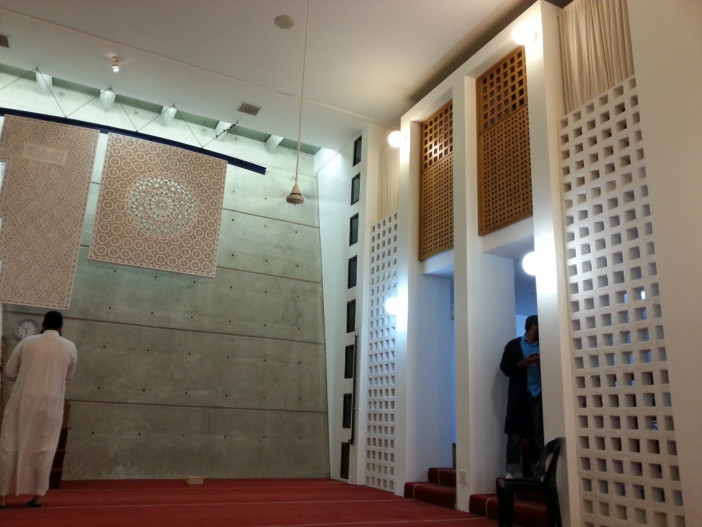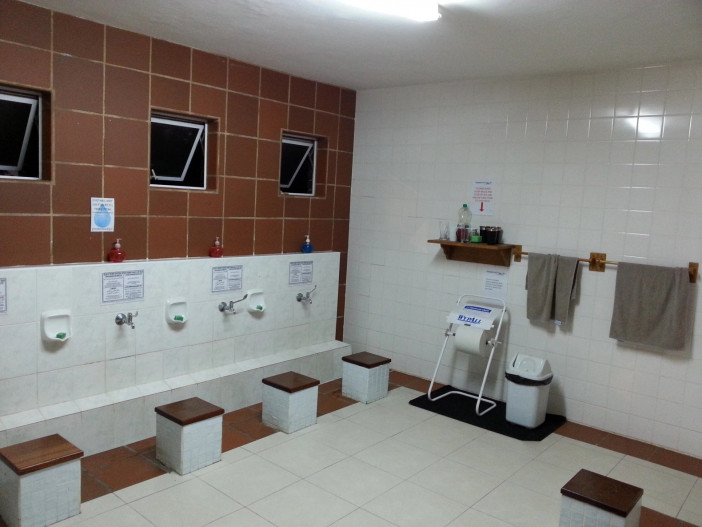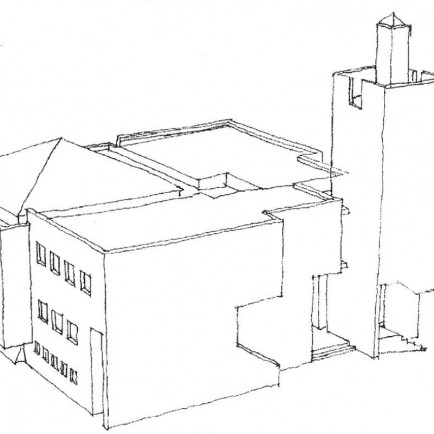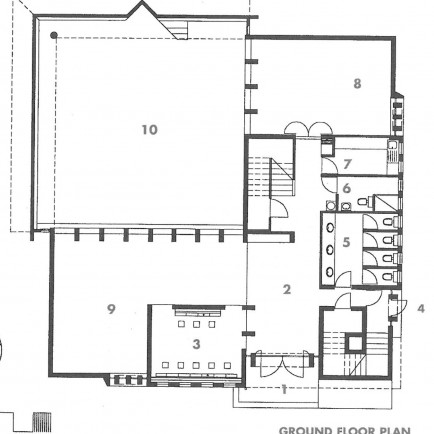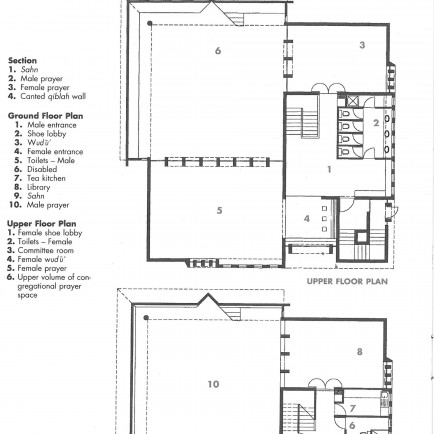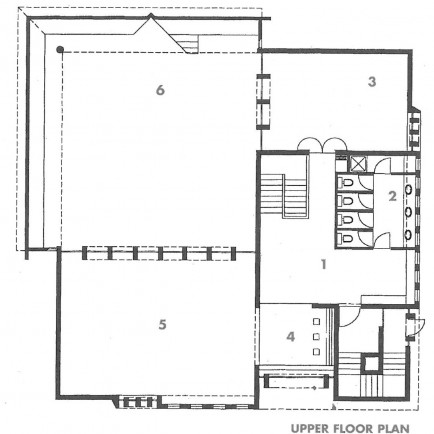The University of Natal Jama'at Khana Masjid
History
The masjid was designed in 1995 by Architects collaborative to be a prayer space fro students on campus.
Urban and Architectural
A prayer space including a main prayer hall, a patio, a women's area, a library, and a small kitchen for university students. The building is made of a concrete structure with brick siding. The volume is of somewhat deconstrcuted cubes.
The building's form's rigid yet straightforward geometry is maintained at the main entrance. A concrete portal that frames the entrance and a number of decorative motifs above the double doors serve to visually reinforce the idea of this entrance. Men access the first floor gallery directly via a smaller (side) door on the east.
Both men and women conduct wudu and take off their shoes before praying. The windows are narrow, the ceilings are low, and the volumes are minimized in the support spaces (toilets and tea kitchen).
Description
The mihrab is represented as an extended prism, and the surface decoration on it, which is a continuation of the interior design, communicates the mihrab's significance outwardly. Outside decoration is kept to a minimum.
References
https://www.kznia-journal.org.za/sites/default/files/1996.3%20Islamic%20Architecture.pdf
https://www.archnet.org/sites/1432
https://www.kznia.org.za/durban-city-guide/islamic-architecture/jama%E2%80%99-at-khana-masjid
Details
الموقع
Natal University Jamaat Khana, Rick Turner Rd, Berea, 4041, South Africa
عدد المصليين
250
المالك / المتبرع
The University of Natal
المعماري
تاريخ البناء
1995
Area
500
الرسومات المعمارية
الخريطة
History
The masjid was designed in 1995 by Architects collaborative to be a prayer space fro students on campus.
Urban and Architectural
A prayer space including a main prayer hall, a patio, a women's area, a library, and a small kitchen for university students. The building is made of a concrete structure with brick siding. The volume is of somewhat deconstrcuted cubes.
The building's form's rigid yet straightforward geometry is maintained at the main entrance. A concrete portal that frames the entrance and a number of decorative motifs above the double doors serve to visually reinforce the idea of this entrance. Men access the first floor gallery directly via a smaller (side) door on the east.
Both men and women conduct wudu and take off their shoes before praying. The windows are narrow, the ceilings are low, and the volumes are minimized in the support spaces (toilets and tea kitchen).
Description
The mihrab is represented as an extended prism, and the surface decoration on it, which is a continuation of the interior design, communicates the mihrab's significance outwardly. Outside decoration is kept to a minimum.


